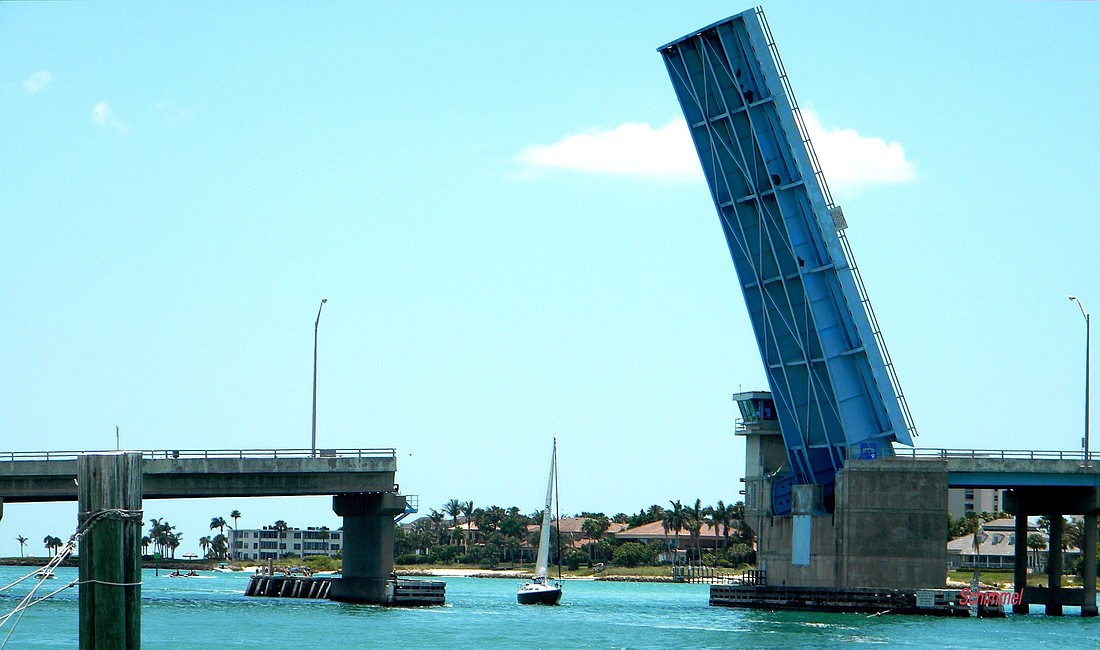- April 16, 2024
-
-
Loading

Loading

Smooth traffic management and a completed project before tourist season begins in earnest. Those were the foremost concerns voiced July 7, when the Siesta Key Association Board of Directors hosted Florida Department of Transportation officials for a discussion of the 2012 north Siesta Key bridge rehabilitation project.
That project will be bid out in December, Jon Sands, FDOT construction engineer for District 1, told the audience of about 10 people gathered at St. Boniface Episcopal Church.
Although bid protests do occur, Sands said, in 99% of cases, projects are awarded within a few days of FDOT’s receipt of bids.
Therefore, Sands said, the contractor should have five months to plan how the $3.49 million project will be undertaken.
“The whole idea is, June 5 (2012), they will come in and hit the ground running,” he said.
Thirteen extra days have been included to accommodate holiday traffic for the Fourth of July and Labor Day, Sands pointed out. A contractor cannot bid to exceed a 133-day schedule, he added.
When board member Ann Kaplan asked about bridge closures, Sands emphasized the work will be undertaken at night — 9 p.m. to 7 a.m. — with one lane of the bridge remaining open.
With this contract, Sands said, FDOT is providing a $7,500-per-day incentive for early completion. Likewise, he said, if the project exceeds the allowed time, the contractor will be fined $7,500 per day. The incentive/disincentive maximum is $150,000, he said.
When rain interrupts more than 50% of a work day, Sands said, the contractor will not be penalized.
The primary work will be the replacement of the bridge decking, said Bronoris Pye, structures engineer for the project. Renovation of the bridge-tender house also will be undertaken, he said. If that work can be done in the daytime without any lane closure, Pye said, the contractor will be allowed to do it.
Kaplan responded that even without a lane closure, daytime work on the bridge could slow traffic.
Sands told her that if FDOT learned daytime work was hampering the traffic flow, officials would tell the contractor to stop.
Should circumstances arise that hold up traffic unexpectedly, SKA President Catherine Luckner asked if the bid award provided funding flexibility to enable the contractor to hire extra flagmen — or even law enforcement assistance.
“They’d better manage the traffic,” said Sarasota County Commission Chairwoman Nora Patterson, who lives near the bridge.
“They will have flagmen that can control the traffic,” Sands replied. “They can hire off-duty law enforcement,” he added, though he doubted that measure would be necessary.
When Kaplan asked whom to contact if backups occurred during the day, Sands told her, “We brought the sacrifice,” eliciting laughter among the audience.
Barry Williams, FDOT project administrator, raised his hand. He was seated near the rear of the room.
“I’ll put a stack of (business) cards over here by the sign-in sheet,” Williams said, referring to the attendance log kept by SKA Secretary Joyce Kouba.
“I’ve lived almost 30 years real close to that bridge,” Patterson said, “and I’ve seen all kinds of projects ... where lanes have been closed, and ... it’s the traffic management that makes the difference. I hope you will impress upon your contractors that they really need to get traffic managers who know what they’re doing.”
Returning to the weather issue, SKA Vice President Peter van Roekens asked, “Are there planned rain days in the contract?”
“No,” Sands said, but the contract will provide a seven-day contingency for rain. “It’s Florida; we know it rains.”
Then Patterson said that Stanley M. Cann, FDOT District 1 secretary, told her that the main reason for starting the project in June — instead of July as originally discussed — was because the summer is hurricane season.
“You could have a lot of rain days,” she pointed out.
“That’s correct,” Sands told her.
Patterson pointed out that the biggest worry remains whether the project will be completed by the time tourist season is fully under way.
“We hope to end in October sometime,” Sands said. “Even with four weeks of rain, we would hope to be done before heavy tourist season.”
Contact Rachel Brown Hackney at [email protected].